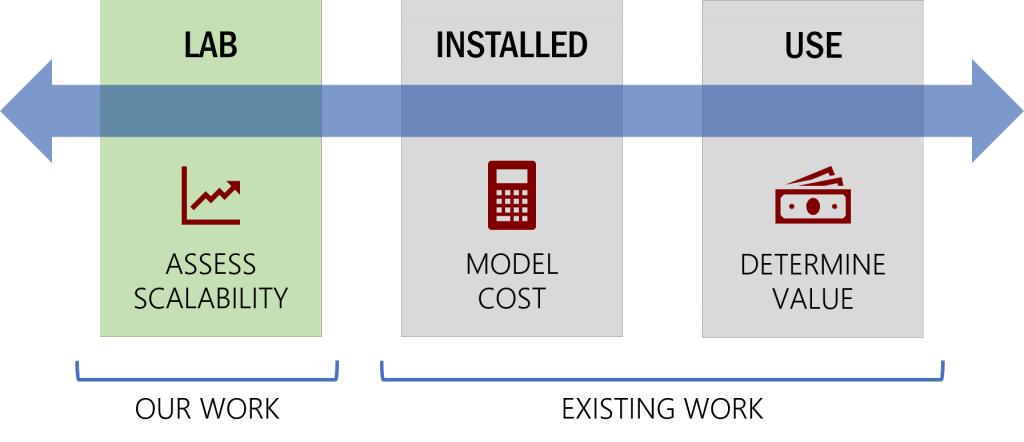Multiple decades are typically required for the commercialization and widespread deployment of materials and manufacturing dependent technologies, including those in clean energy on which we must rely to limit the effects of global climate change. During the transition from research and development to full production-scale manufacturing, technologies and processes must often be redesigned at intermediate stages to resolve unanticipated production challenges that arise. Moreover, cycles of learning grow at each larger production scale, further compounding the time and expense to implement any requisite changes to product and process design.
While there are countless barriers that could inhibit or frustrate this scale up to manufacturing, several burdens persist that derive from the disparity in processes and equipment available at different production scales. For instance, target performance and properties are likely to diverge when materials and devices are produced by contrasting processes. Likewise, the factors that drive the cost of production typically changes at transitions to larger scale processes. Finally, the availability of the essential input materials may be constrained in ways not foreseen during small scale experimentation and prototyping.

Therefore, it is critical for early stage researchers to understand these differences so that technologies may be designed from inception to be innately manufacturable and scalable. Our work aims to provide experimental researchers with the insights they need to accomplish this. Whereas current technoeconomic work typically evaluates the production, installation, or lifetime costs of mature technologies, we seek to develop analytical tools that can assess the scalability of comparatively nascent, laboratory-derived clean energy technologies. In doing so, we hope to inform the design of critical clean energy technologies in a way that accelerates their scale up.

Our approach consists of three principal analytical activities:
- Literature text mining
An internally developed, machine learning driven, natural language processing pipeline is employed to mine the scientific literature for materials, process, and equipment attributes at a scale not achievable by prior manual means.
- Technoeconomic modeling
Process cost models are constructed to isolate critical production cost drivers as a function of materials design, process characteristics, and production scale.
- Supply chain analysis
For the relevant materials of interest, an examination of the current and projected demand, as well as current and projected resource availability and production, is performed to identify supply chains that may ultimately constrain large-scale manufacturing.